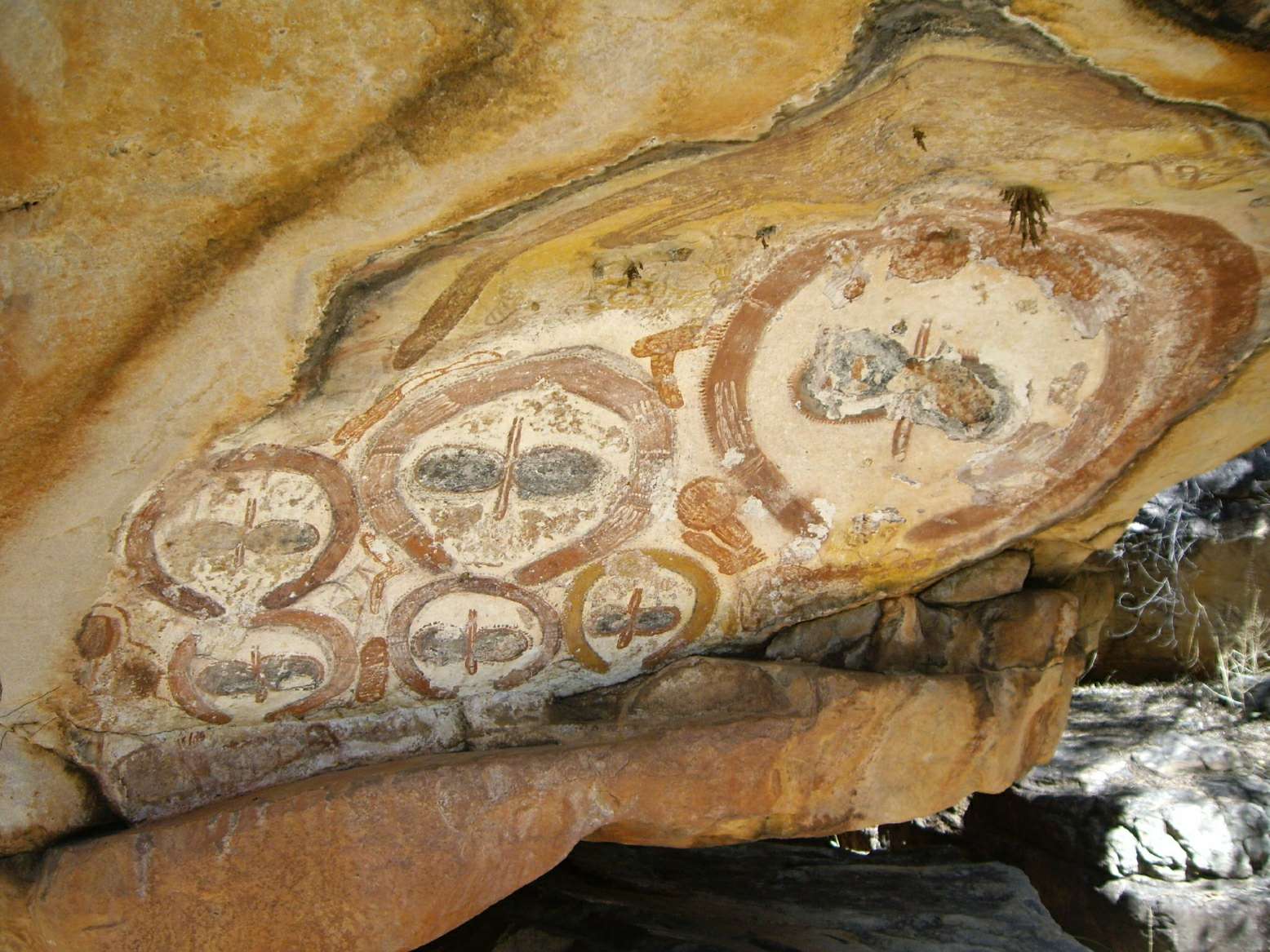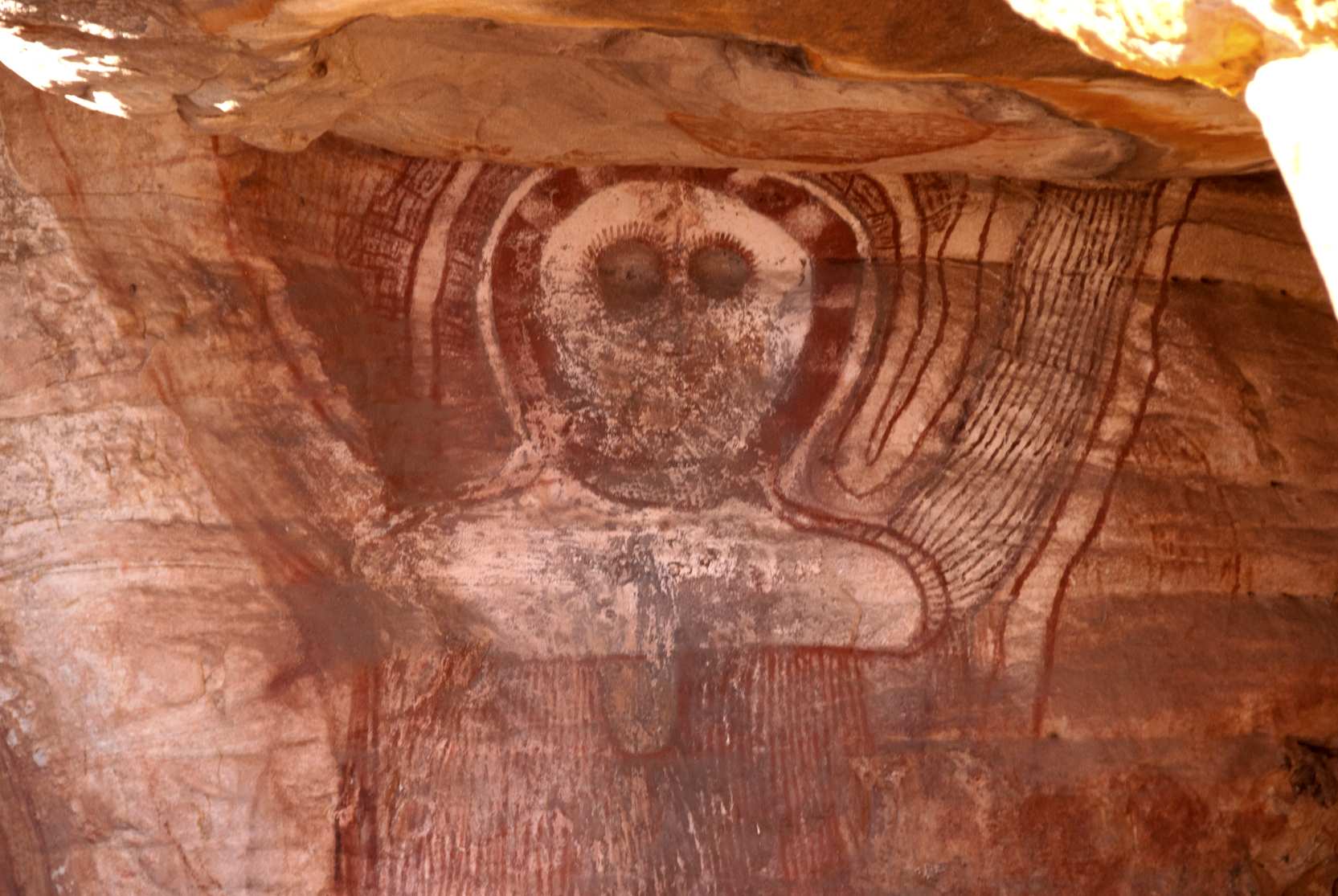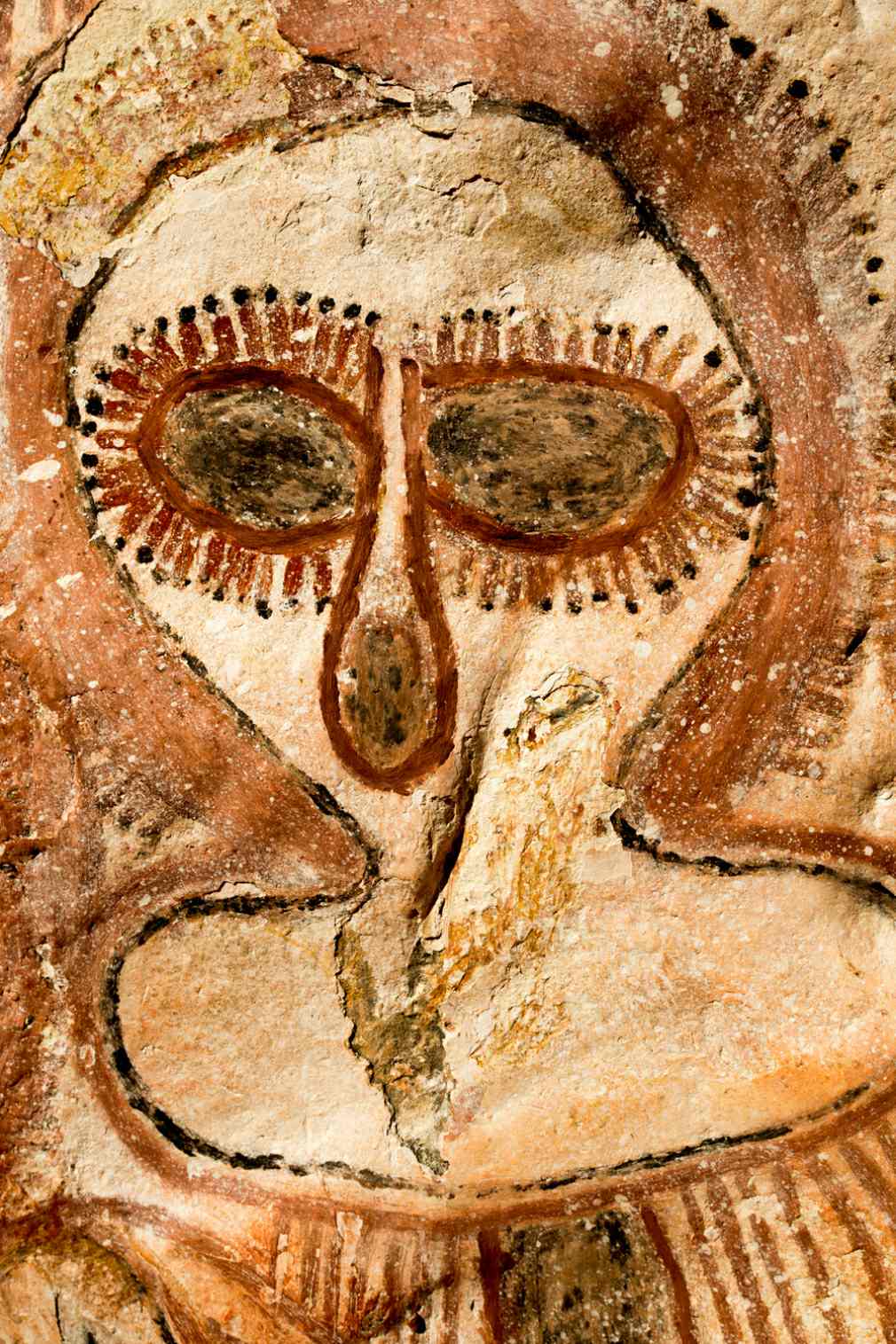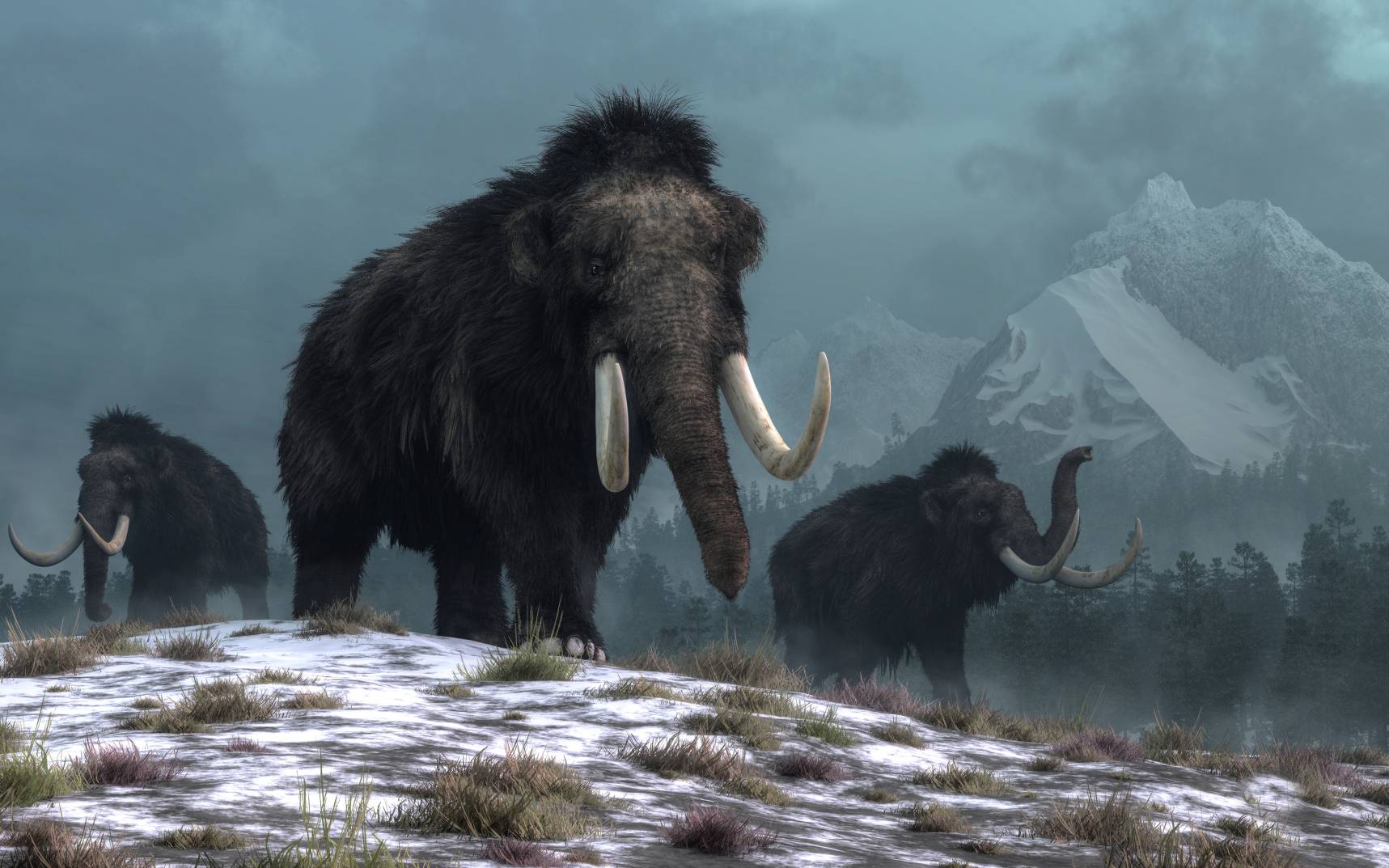The language groups from Kimberley’s west and coast, including Ngarinyin, Worrorra, and Wunambul, all shared the significance of Wandjina story that is fascinating yet intriguing.

A wide area of around 200,000 square kilometers in the Kimberly region of north-western Australia is home to the Wandjina people, who have had a continuous civilization there for at least 60,000 years if not much more.
In the Australian Aboriginal culture, the tale of the Wandjinas, the ultimate spirit beings that created the land and people, is one of the most intriguing and baffling stories to be found.
Perhaps the most intriguing aspect of their figurative art, which was painted on rocks and in caves, is the way in which they have depicted the Wandjinas, who have white faces devoid of a mouth, enormous black eyes, and a head wrapped by a halo or some form of helmet, among other characteristics.

The question that worries people the most is ― are these cave paintings depicting the Wandjinas the evidence of extraterrestrial visitors interacting with prehistoric humans?
Various interpretations of the ancient paintings have been made, ranging from stylized depictions of people or even owls to beliefs about ancient astronauts who visited Earth tens of thousands of years ago and had direct contact with the people.
Kai kurie žmonės taip mano extraterrestrials had a hand in the formation of the universe, which is represented in Aboriginal Dreamtime traditions as well as myths and legends from all across the world’s past civilizations.

In addition, many people wonder why the Wandjinas were painted with white skin if they were meant to symbolize other Aboriginal people, who were all of the dark skin colors.
Moreover, why were the eyes of Wandjina firgures usually painted in such a way that they were out of proportion to the rest of the face? What was the point of painting them all without a mouth? ― These are some questions that have been puzzling us since decades.
However, what’s even more unexpected is the oral history of the Wandjinas, which, like all Aboriginal Dreamtime legends, has been passed down from one generation to the next.
According to legend, The Wandjina were “sky-beings” or “cloud spirits” who came down from the Milky Way during Dreamtime and formed the Earth and all of its people. Then Wandjina glanced about at the people and realized the magnitude of the task ahead, and returned home to recruit other Wandjinas.
The Wandjina descended with the assistance of the Dreamtime snake, and they spent their Dreamtime creating, teaching, and acting as Gods to the Aboriginals whom they had created.
After a period of time, the Wandjinas were no longer there. It is believed that they descended into the earth and lived at the bottom of the water source that is related to each of the paintings.
A constant flow of child seeds is produced there, and they are considered as the origin of all human existence. Others fled into space and are now visible as bright lights traveling thousands of miles above Earth’s surface at night.
Even after the Wandjina vanished, Aboriginal people in the Kimberley still believe that they were in charge of everything that transpired on land, in the sky, and the water.
As with religious teachings of the contemporary day, Aboriginal Dreamtime stories, rock art, and cave paintings have frequently been regarded as myths rather than historical facts.
But some Dreamtime legends, however, have been shown to be true by subsequent archaeological discoveries. As an example, those who spoke of giant mammals roaming the Earth were formerly thought to be fabricating stories.

However, the discovery of animal fossils belonging to the so-called “megafauna,” which included huge mammals, revealed that these myths were based on true occurrences that had been passed down through generations over tens of thousands of years.
On a curious, and contentious note, artifacts have been discovered on geographical areas that indicate the area had been inhabited as far back as 174,000 BC. This is in direct opposition to the assumption that Aboriginal people had routes in Africa and migrated to Australia some 60,000 years ago. There have been theories that Homo sapiens originated in Australia.
Even now, the Wandjina are revered by the Worora, Ngarinyin, and Wunumbul Aboriginal people, and only a select few are allowed to paint them. People who broke the law were punished by floods, lightning, and cyclones, according to legend. Because the Wandjina paintings are said to have these powers, Aboriginals believe they should always be approached with reverence and treated with utmost courtesy.
As a result of the importance of their culture, why would ancient Aboriginals make up stories they termed myths or fantastic tales? Archaeological findings have previously established the truth of a plethora of ancient myths and stories.
Is it possible that the Aboriginal people of the period were just recounting events in the way they had seen and understood them at the time? Maybe we’ll find out the answers to such fascinating questions one day.




